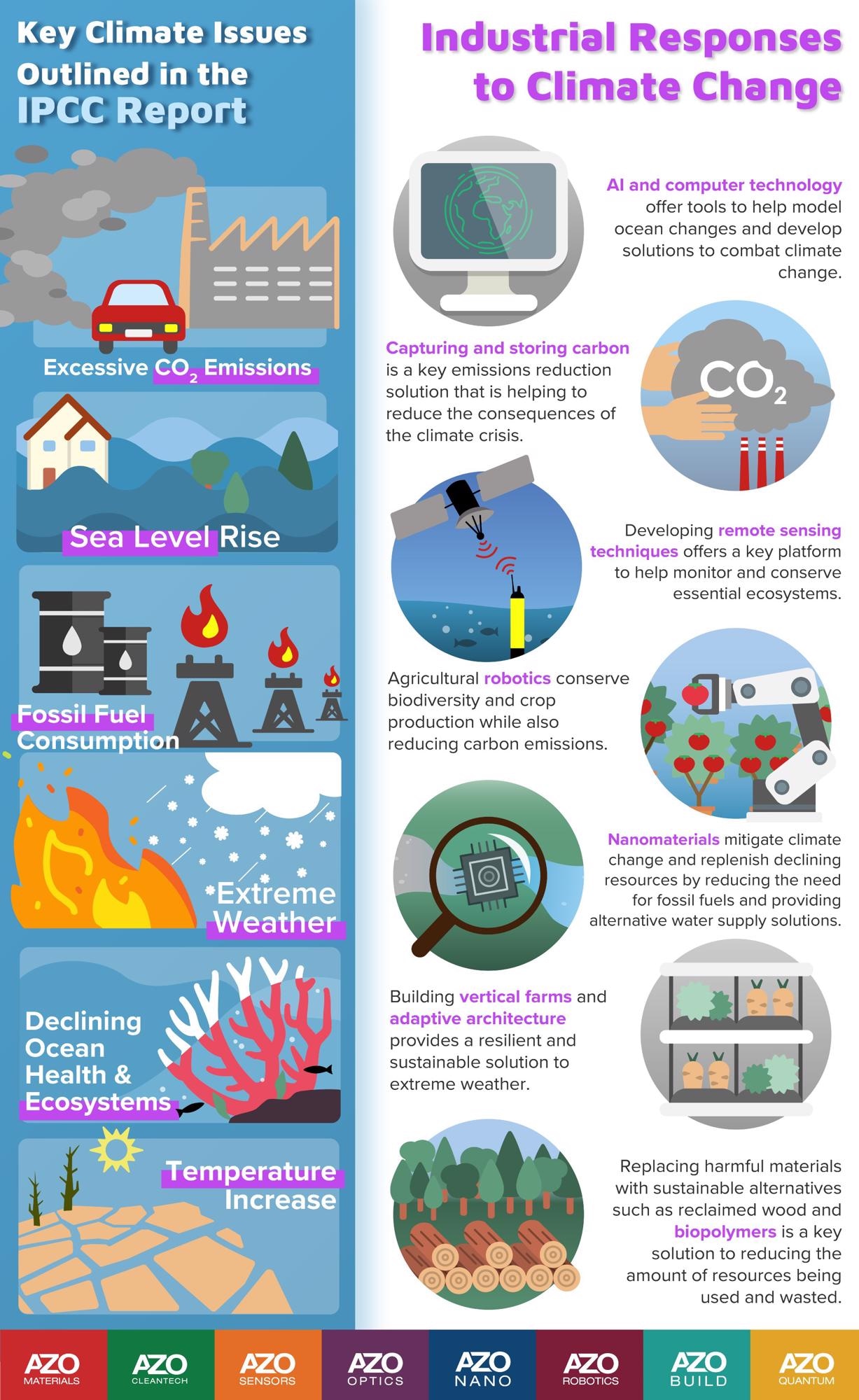
Changes to global ecosystems and climate are now inevitable. However, utilizing advancements in optics technology may enable effective, impactful solutions that can reduce the effects of climate change in the present and the future.
The Intergovernmental Panel for Climate Change (IPCC), a United Nations body, works to alert the world about the ongoing climate crisis. Due to the observed global warming of 1.5 ºC, a special report was released detailing all consequences and future trajectories of the planet.
Coverage of various climate change factors, such as rising carbon dioxide emissions, emphasized the necessity to upscale technologies and design adaptive solutions. As stated by the IPCC, "Future climate-related risks would be reduced by the upscaling and acceleration of far-reaching, multilevel and cross-sectoral climate mitigation and by both incremental and transformational adaptation."
What is IPCC's Sixth Assessment Report?
Video Credit: Intergovernmental Panel on Climate Change (IPCC)/YouTube.com
In 2021, the IPCC released a follow-up to its 2018 Summary for Policymakers encompassing crucial insights regarding the ongoing climate crisis. As the first extensive assessment of climate change scientific data since 2013, the 2021 Physical Science Basis Summary for Policymakers leaves no stone unturned. Rising greenhouse gas emissions, predicted 2 m sea-level rise by the end of the century, along with devastating impacts on ecosystems worldwide, are just a handful of almost certain outcomes. Behind these changes is a common conclusion:
There is a near-linear relationship between cumulative anthropogenic CO2 emissions and the global warming they cause…Observed increases in well-mixed greenhouse gas (GHG) concentrations since around 1750 are unequivocally caused by human activities.
Climate Change 2021: Physical Science Basis Summary for Policymakers, IPCC, 2021
Anthropogenic activities have influenced the progression of climate change consequences, worsening the state of the global climate. Only with the design and implementation of adaptable strategies can this be reversed.
An Industrial Response to Climate Change
AZoOptics is taking a sector-specific look at how optic technology and research tackle key issues highlighted within the IPCC's 2018 Summary for Policymakers and 2021 Physical Science Basis reports.
Each article within the collection will explain a specific advancement or adaption, exploring the link between the technology and efforts to mitigate climate change. While referencing crucial issues highlighted within the IPCC's reports, market relevance, limitations, and future directions of the different technologies will also be covered.
The Industrial Response to Climate Change series provides a unique opportunity to learn more about the optic innovations helping to overcome the adverse effects of climate change, reinforcing the importance of research and development to combat this global crisis.

Image Credit: Sara Lopez Segura
Here, AzoOptics covers how EnMAP's advancements in hyperspectral sensor technology aid in designing more efficient and accurate climate change solutions, while ICESat-2's space lasers will utilize spectral imaging to monitor the decline of arctic ice. A significant rise in sea level is predicted by 2040, but obtaining up-to-date information could help policymakers implement flood prevention strategies to sustain vital coastal infrastructure.
Within each report, the IPCC has clearly stated the need to address greenhouse gas emissions. Although carbon dioxide is a serious contributor to global warming, attention must be drawn to other impactful pollutants. Atmospheric methane concentration has been steadily rising, but the release of a new gas imaging camera from QLM Technology could help major industries detect gas leaks more quickly, paving the way towards a reduction in emissions.
The design of precise, adaptable strategies will be instrumental in improving the outlook of our planet. Whether monitoring the after-effects of climate change as they occur or preventing them from happening at all, advancements in optics technology are sure to be involved.
References and Further Reading
IPCC, (2018) Summary for Policymakers. In: Global Warming of 1.5°C. An IPCC Special Report on the impacts of global warming of 1.5°C above pre-industrial levels and related global greenhouse gas emission pathways, in the context of strengthening the global response to the threat of climate change, sustainable development, and efforts to eradicate poverty [Masson-Delmotte, V., P. Zhai, H.-O. Pörtner, D. Roberts, J. Skea, P.R. Shukla, A. Pirani, W. Moufouma-Okia, C. Péan, R. Pidcock, S. Connors, J.B.R. Matthews, Y. Chen, X. Zhou, M.I. Gomis, E. Lonnoy, T. Maycock, M. Tignor, and T. Waterfield (eds.)]. World Meteorological Organization, Geneva, Switzerland. In Press
IPCC, (2021) Summary for Policymakers. In: Climate Change 2021: The Physical Science Basis. Contribution of Working Group I to the Sixth Assessment Report of the Intergovernmental Panel on Climate Change [Masson-Delmotte, V., P. Zhai, A. Pirani, S. L. Connors, C. Péan, S. Berger, N. Caud, Y. Chen, L. Goldfarb, M. I. Gomis, M. Huang, K. Leitzell, E. Lonnoy, J.B.R. Matthews, T. K. Maycock, T. Waterfield, O. Yelekçi, R. Yu and B. Zhou (eds.)]. Cambridge University Press. In Press.